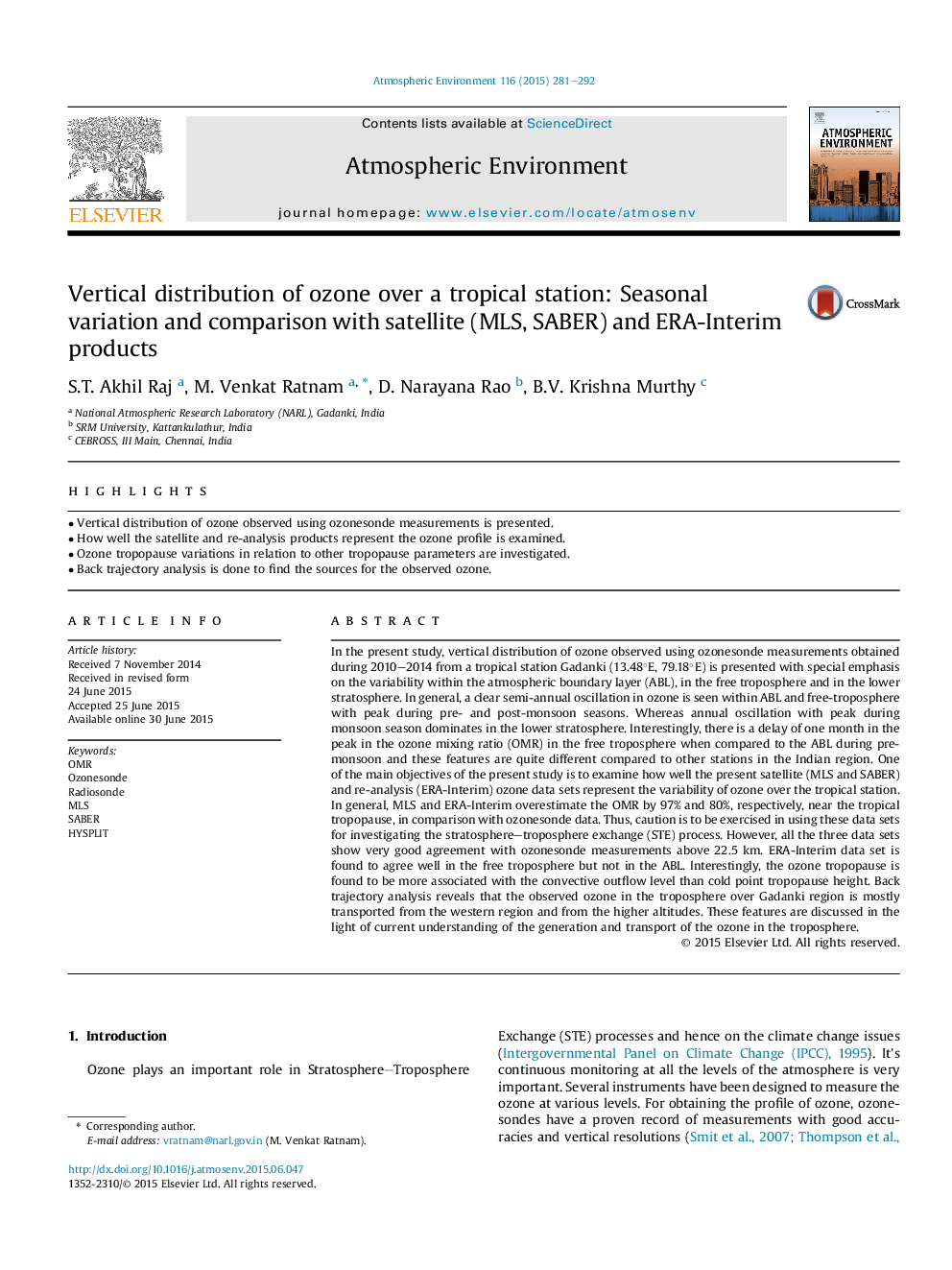| Article ID | Journal | Published Year | Pages | File Type |
|---|---|---|---|---|
| 4438137 | Atmospheric Environment | 2015 | 12 Pages |
•Vertical distribution of ozone observed using ozonesonde measurements is presented.•How well the satellite and re-analysis products represent the ozone profile is examined.•Ozone tropopause variations in relation to other tropopause parameters are investigated.•Back trajectory analysis is done to find the sources for the observed ozone.
In the present study, vertical distribution of ozone observed using ozonesonde measurements obtained during 2010–2014 from a tropical station Gadanki (13.48°E, 79.18°E) is presented with special emphasis on the variability within the atmospheric boundary layer (ABL), in the free troposphere and in the lower stratosphere. In general, a clear semi-annual oscillation in ozone is seen within ABL and free-troposphere with peak during pre- and post-monsoon seasons. Whereas annual oscillation with peak during monsoon season dominates in the lower stratosphere. Interestingly, there is a delay of one month in the peak in the ozone mixing ratio (OMR) in the free troposphere when compared to the ABL during pre-monsoon and these features are quite different compared to other stations in the Indian region. One of the main objectives of the present study is to examine how well the present satellite (MLS and SABER) and re-analysis (ERA-Interim) ozone data sets represent the variability of ozone over the tropical station. In general, MLS and ERA-Interim overestimate the OMR by 97% and 80%, respectively, near the tropical tropopause, in comparison with ozonesonde data. Thus, caution is to be exercised in using these data sets for investigating the stratosphere–troposphere exchange (STE) process. However, all the three data sets show very good agreement with ozonesonde measurements above 22.5 km. ERA-Interim data set is found to agree well in the free troposphere but not in the ABL. Interestingly, the ozone tropopause is found to be more associated with the convective outflow level than cold point tropopause height. Back trajectory analysis reveals that the observed ozone in the troposphere over Gadanki region is mostly transported from the western region and from the higher altitudes. These features are discussed in the light of current understanding of the generation and transport of the ozone in the troposphere.
